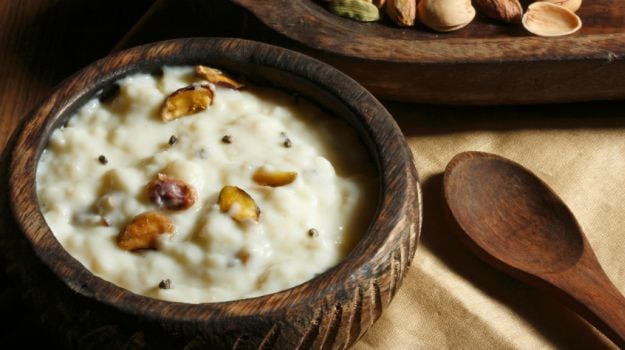
Yogis who traveled the world offering yoga, and seekers who came to India to quench their spiritual thirst.
The International Day of Yoga just went by on June 21. Across the planet, millions of people practiced yoga, making it one of India’s most cherished gifts to the world. But long before the UN declared the Yoga Day, the land of Bharat was seen as a source of the spiritual sciences. For many millennia, yogis have travelled across the world, spreading these tools for wellbeing. And people have travelled to the subcontinent, to quench their spiritual thirst. Few of the more ancient travellers and yogis.
Pythagoras
Pythagoras is mainly known for his geometry today. But that was just a small part of his life. The major part of his life was spiritual work. He travelled to India about 2500 years ago and was heavily influenced by Indian yogis. It is said that Pythagoras practiced mantras, promoted vegetarianism, believed in reincarnation and put people on years of silence. For the first time in that part of the world, someone was talking about the benefit of not opening your mouth!
Apollonius of Tyana
The Greek philosopher Apollonius in the first century AD, was a follower of Pythagoras. Inspired by him, he came to India and spent many years with a yogi, who he refers to as Ayarchas. There is no such Indian name, and the Greeks probably mispronounced it. We don’t really know what the original name was now.
Later, when he was returning to Greece, he wrote a poem in honor of his guru and said, “I came by land but you poured an ocean upon me.” On his way back, he went to Turkey, North Africa and Egypt. He wrote of how Egyptian culture had developed from what had come from India, but he was hugely disappointed by the levels of ignorance that had come to prevail there. There was nothing except blind rituals. When the Egyptian priests asked him, “Where do you get this arrogance from? How can you speak with such authority?”, he replied, “I have been to a land where once you step there, you can speak with this authority.”
He was a big influence on Julia Domna, one of the empresses of the Roman Empire. She commissioned a book on Apollonius, which was written by Philostratus. This book went to all the important centers in Europe and has been preserved in many different places.
Pyrrho
Another great philosopher, mathematician, and scientist known as Pyrrho, traveled with Alexander to India. He spent some time here and went back to Greece, where he offered a philosophy about inner tranquility and peace. These were strange things for the Europe of the day. Usually, the only way to be peaceful was to have your neighbors dead!
61 Women
There are records of how somewhere between 3000 to 3500 years ago, a group of 61 women came and learnt the arts of mantra, yantra and tantra from certain teachers in northern India. They then travelled to and spread this in a big way in Central Asia, Europe, Turkey and Arabia. There is not much known or said about them, but they created a big movement in those parts of the world thousands of years ago. You will see, in Arabia, Europe, Phoenicia and many other places, goddess worship was the most prominent thing till certain aggressive belief systems came up and put them down.
Mansur Al-Hallaj
One of the most prominent figures in the Sufi way of life is Mansur Al-Hallaj. He came from Basra in present-day Iraq. During his travels, he came to Gujarat around the tenth century AD and spent many years with a teacher there. When he returned to Iraq, he went wearing only a loincloth – typical yogi stuff! And he said, “Ana al-haqq”, which is the same thing as “Aham Brahmasmi” – “I am God”. Mansur went to Mecca and set up a small deity of his own – perhaps he consecrated it in some way. And people started going there instead.
People thought he was crazy – one thing was the loincloth, and another thing was claiming to be God. But he wouldn’t stop. He went to Mecca and set up a small deity of his own – perhaps he consecrated it in some way. And people started going there instead. That’s not something anyone would live through, and he was killed in a horrible way.
They actually peeled off his skin, alive, and buried him up to his waist. An order was given that anyone who passes by that street must throw a stone at him. Mansur’s dear friend was going that way, and he had to throw something. But he did not have the heart to throw a stone, so he threw a flower at him.
When this happened, Mansur burst out into poetry: “Of all the things, those stones don’t hurt me because they are thrown by the ignorant. You threw this flower. This has hurt me so deeply because you know and still you have thrown something at me.”
South-east Asia
In Indian mythology and in many other parts of the world, they speak of the nether world, which is known as the Naga Loka. This was a whole society of human beings known as Nagas. The Nagas belong to the snake clan and played a very important role in shaping the consciousness of India and of many other cultures. Today, we know that the great temples of Angkor, Angkor Thom and Angkor Wat of Cambodia, were built by Naga descendents. The Nagas went from India, mixed with the indigenous people and established the kingdom there.
How Zen Came to China
Bodhidharma was born a prince in the Pallava Kingdom in southern India. He was the son of the king of Kanchipuram, but at an early age, he left his kingdom and princehood and became a monk. At the age of twenty-two he was fully enlightened, and that was when he was sent as a messenger to China.
It was Bodhidharma who brought Zen to China. Gautama the Buddha taught Dhyan or meditation. Hundreds of years later, Bodhidharma transported Dhyan to China where it became Chan. This Chan went further down to Indonesia, Japan, and other far-east Asian countries, where it became Zen.
The Saptarishis
In the yogic tradition, Shiva is not worshipped as a God. He is theAdiyogi, the first yogi, and Adi Guru, the first guru from whom the yogic sciences originated. The first full moon of Dakshinayana is Guru Purnima, when Adiyogi transformed himself into the Adi Guru. The first Guru was born and the Adiyogi started teaching the Saptarishis, his first seven disciples.
Guru Purnima marks one of the greatest moments in the life of humanity. This is a day that is reminiscent of Adiyogi opening up and offering the possibility that a human being can evolve beyond all limitations set by his physical nature, if willing to strive.
The transmission went on for a long period of time. When, after many years, it was complete and it had produced seven fully enlightened beings, Adiyogi said, “Go and spread this across the world.”
So one went to Central Asia, another went to the Middle East and North African region, another went to South America. Another stayed right there with Adiyogi. Another went to the lower regions of Himalayas, another went to Eastern Asia, and another travelled south. The one who travelled south into the peninsula of India is of greatest significance to us because he is Agastya Muni.
When we say “south,” anything south of the Himalayas is “south.” He came south and made the spiritual process a part of everybody’s life. They say he did not spare a single human habitation in the subcontinent. He made sure every human habitation in the region was touched, not as a teaching but by making the spiritual process a part of their life. You can still find the remnants of his work in every family in this country.
Yoga is a huge love affair. It is a process of including every form and dimension of life.

























